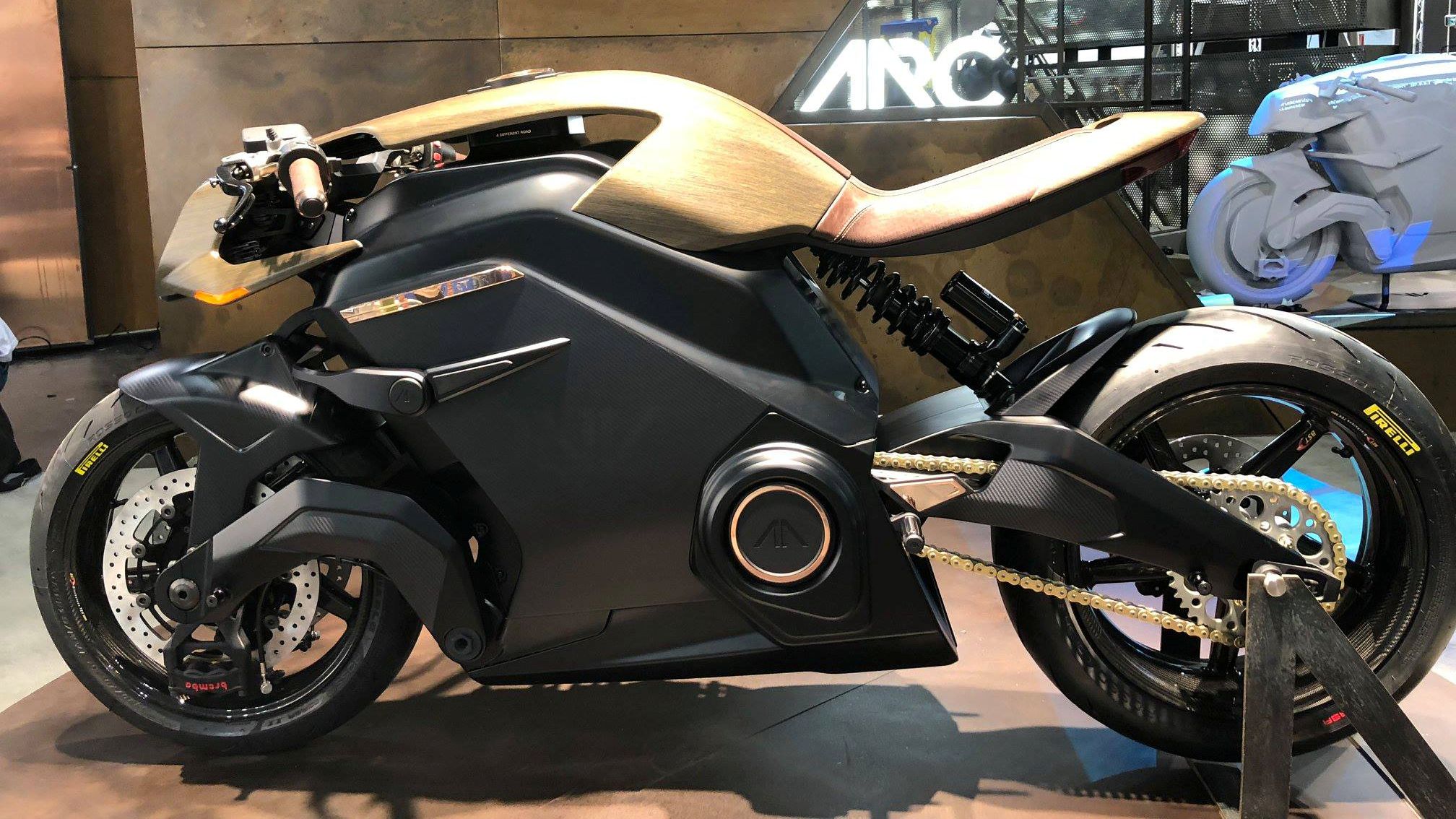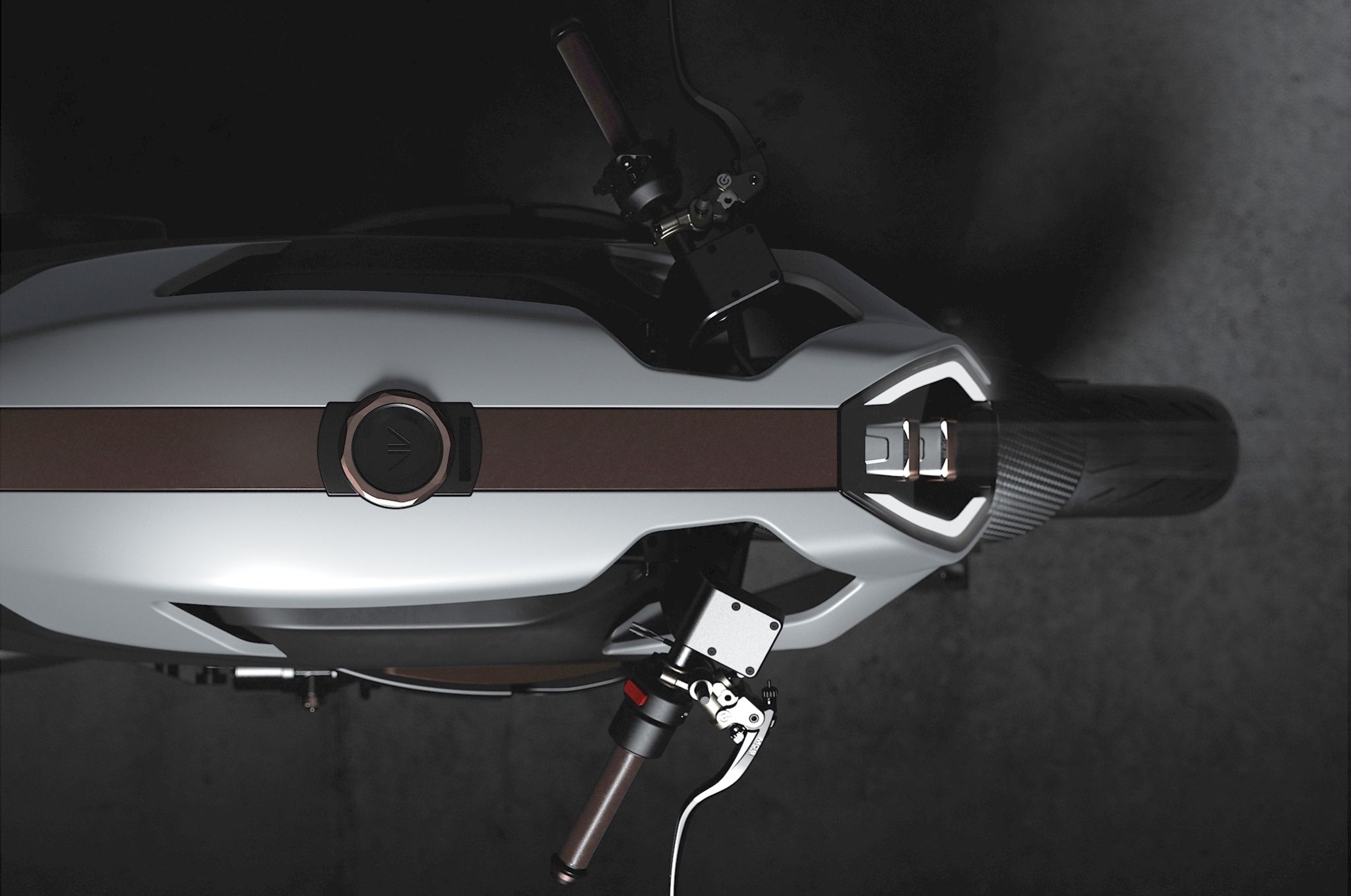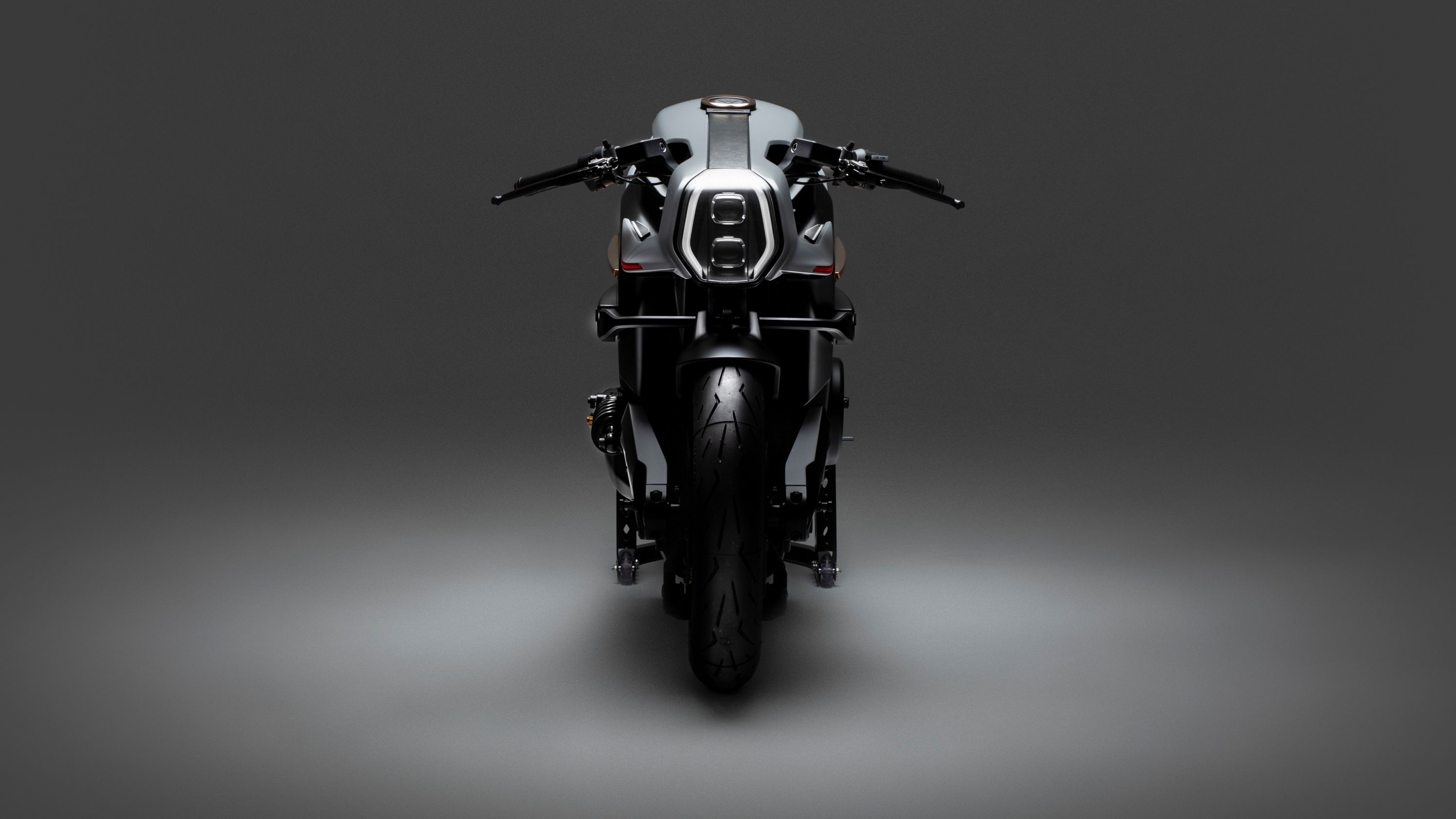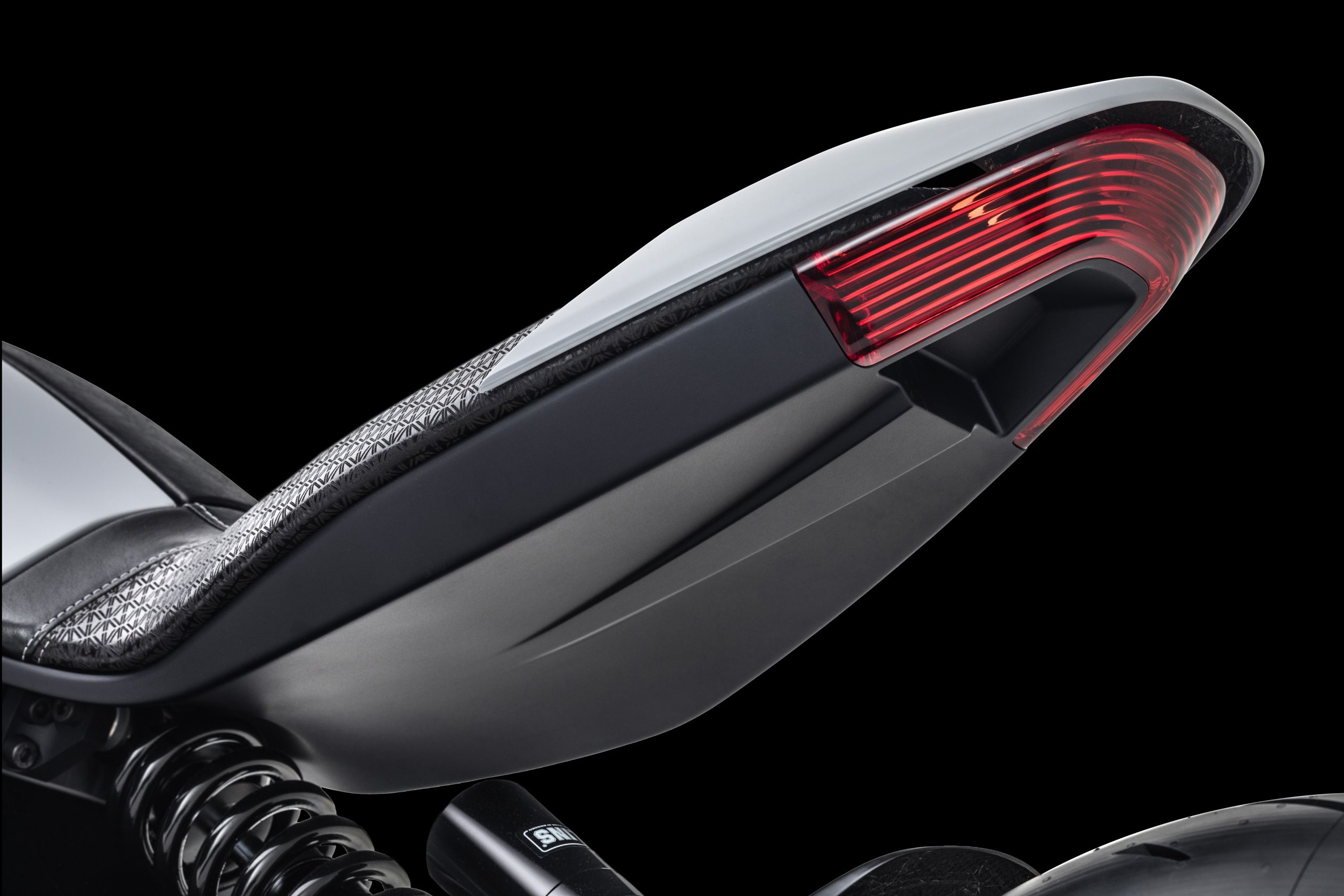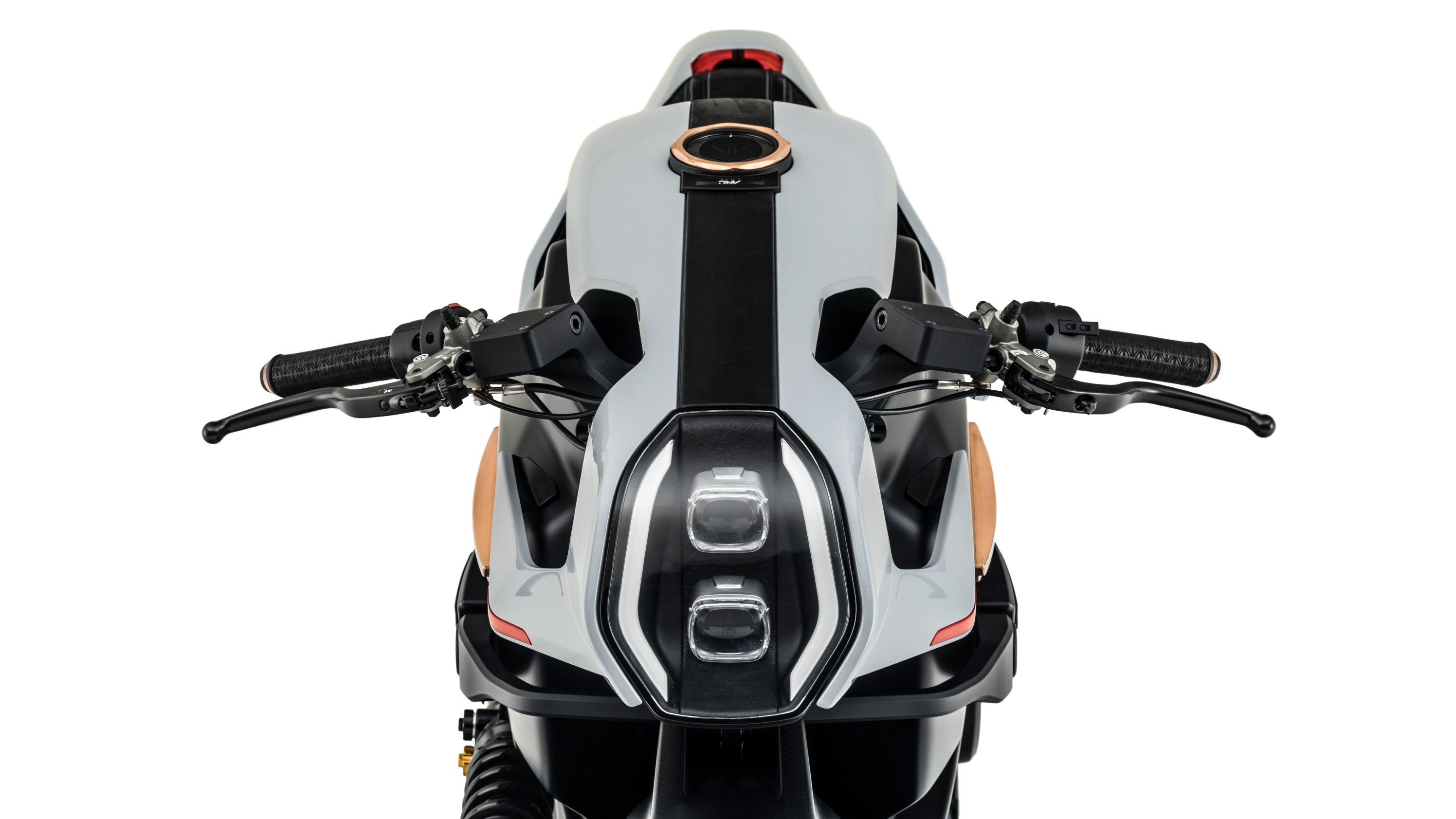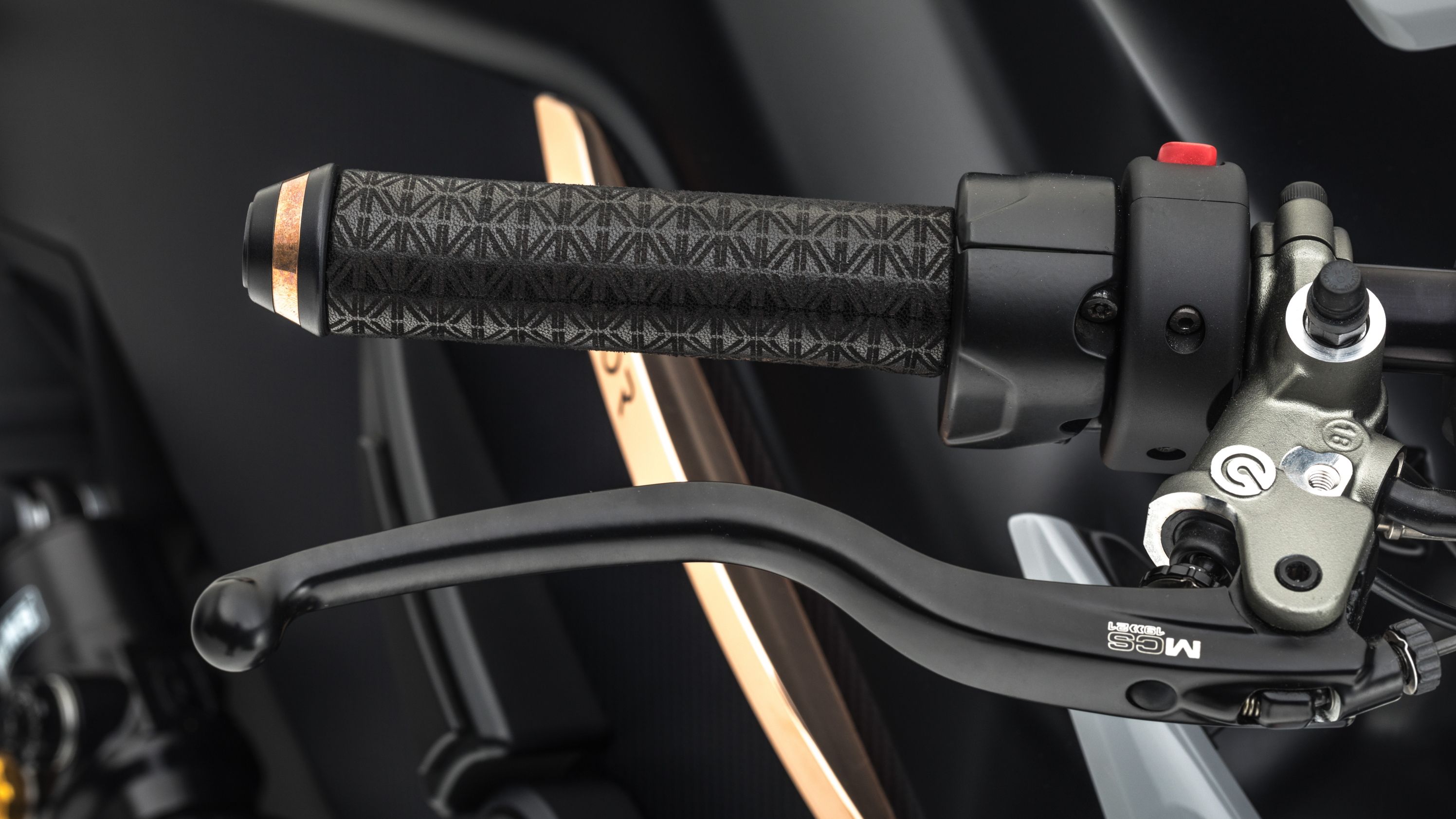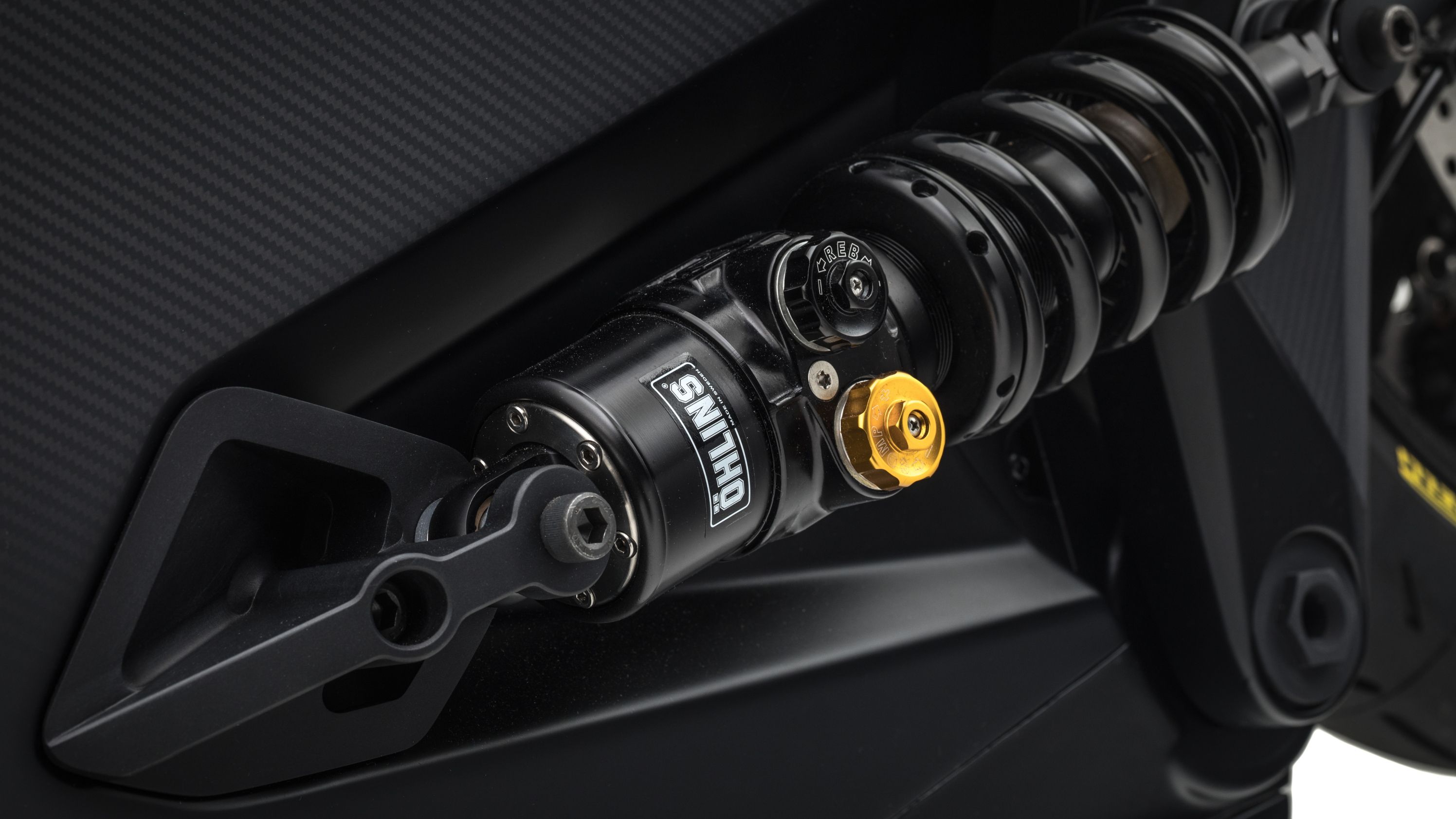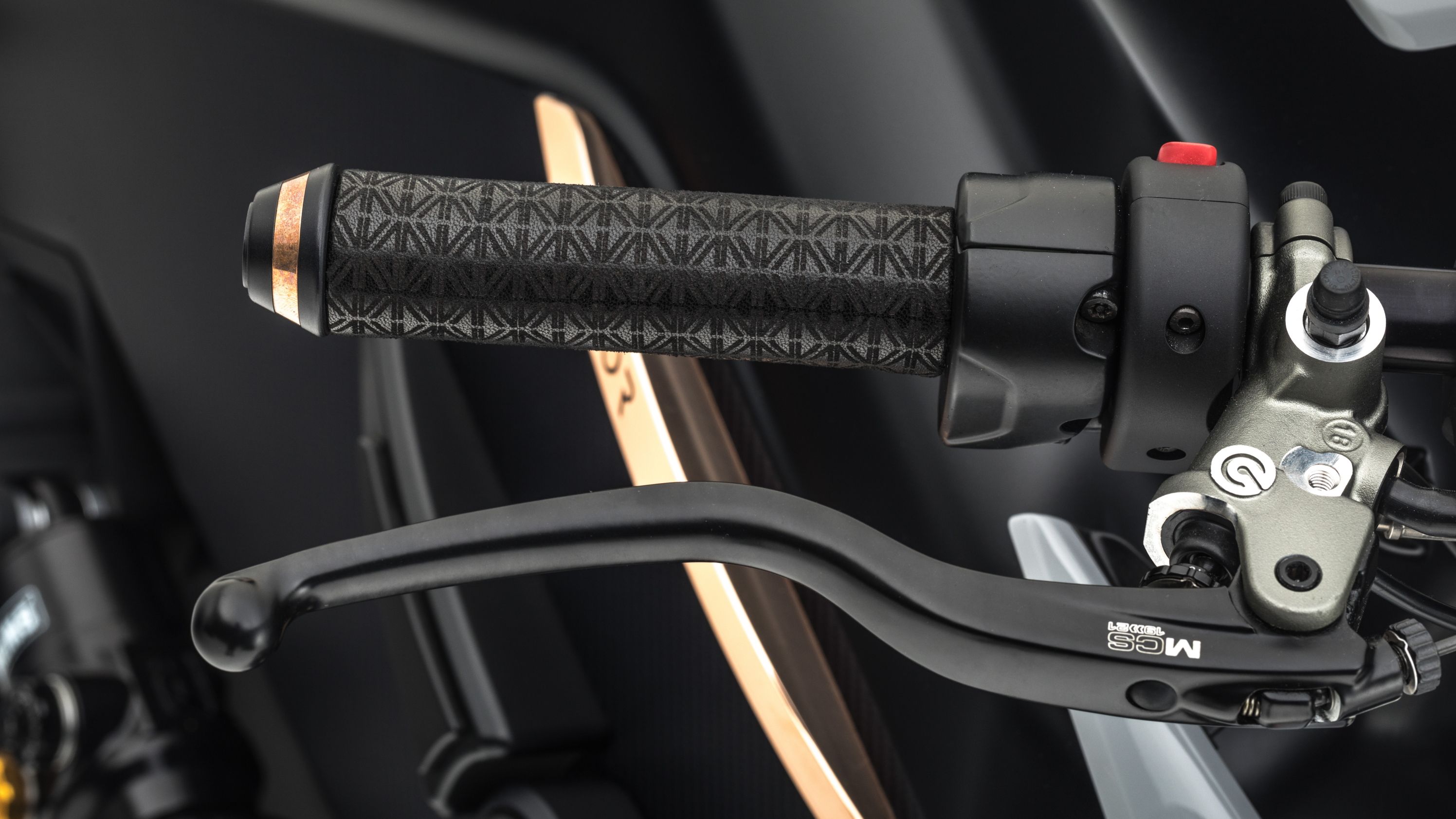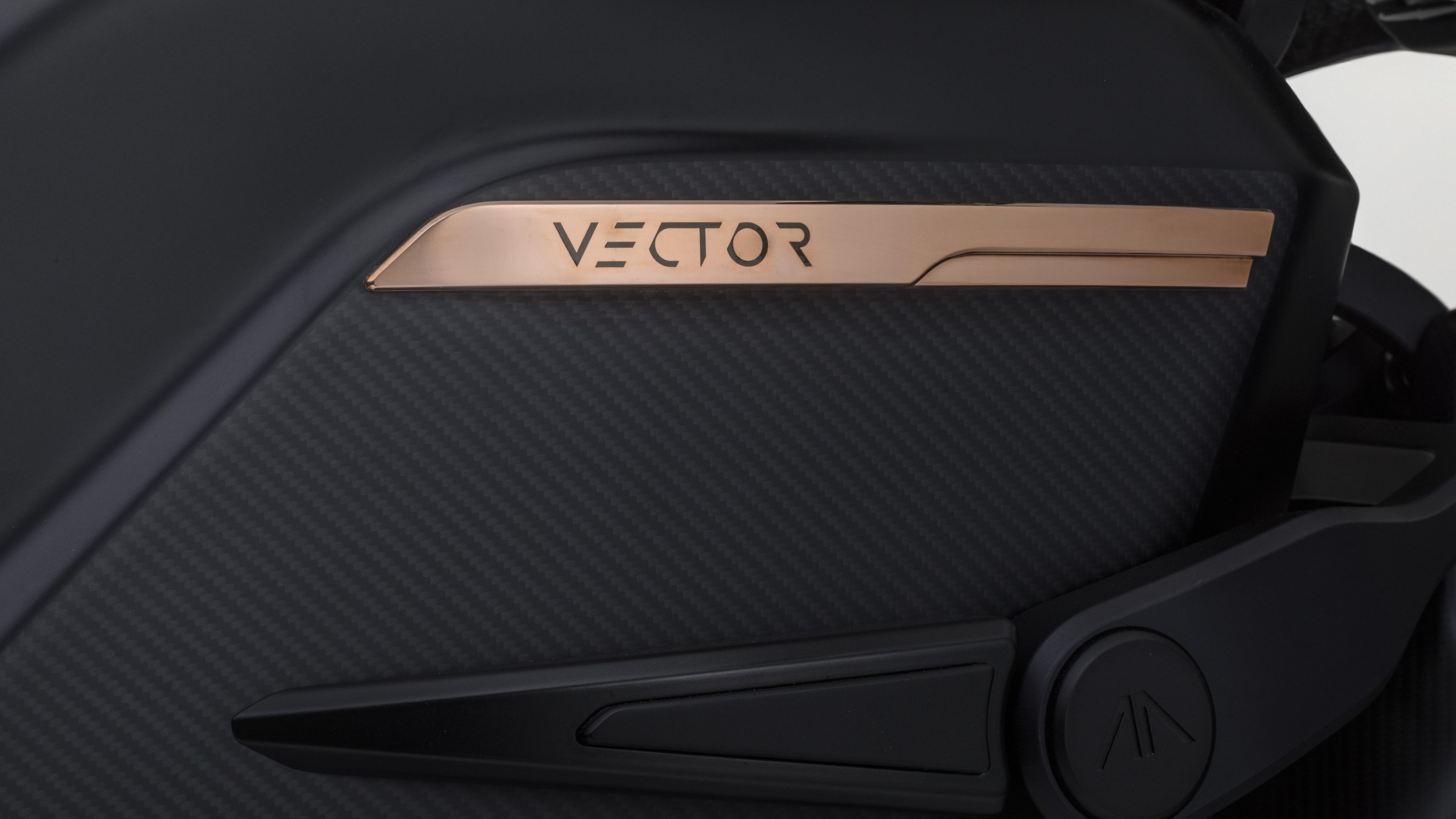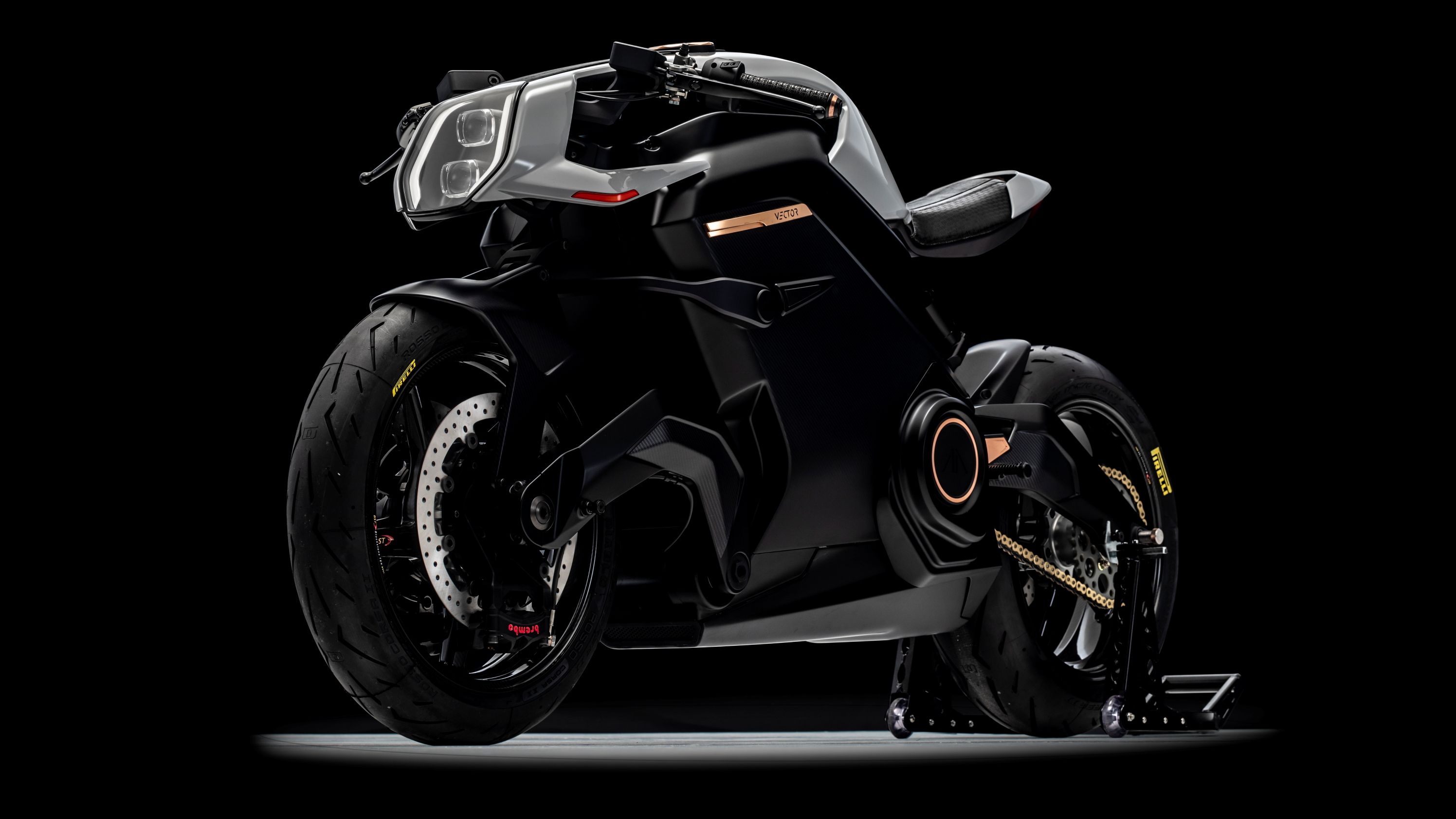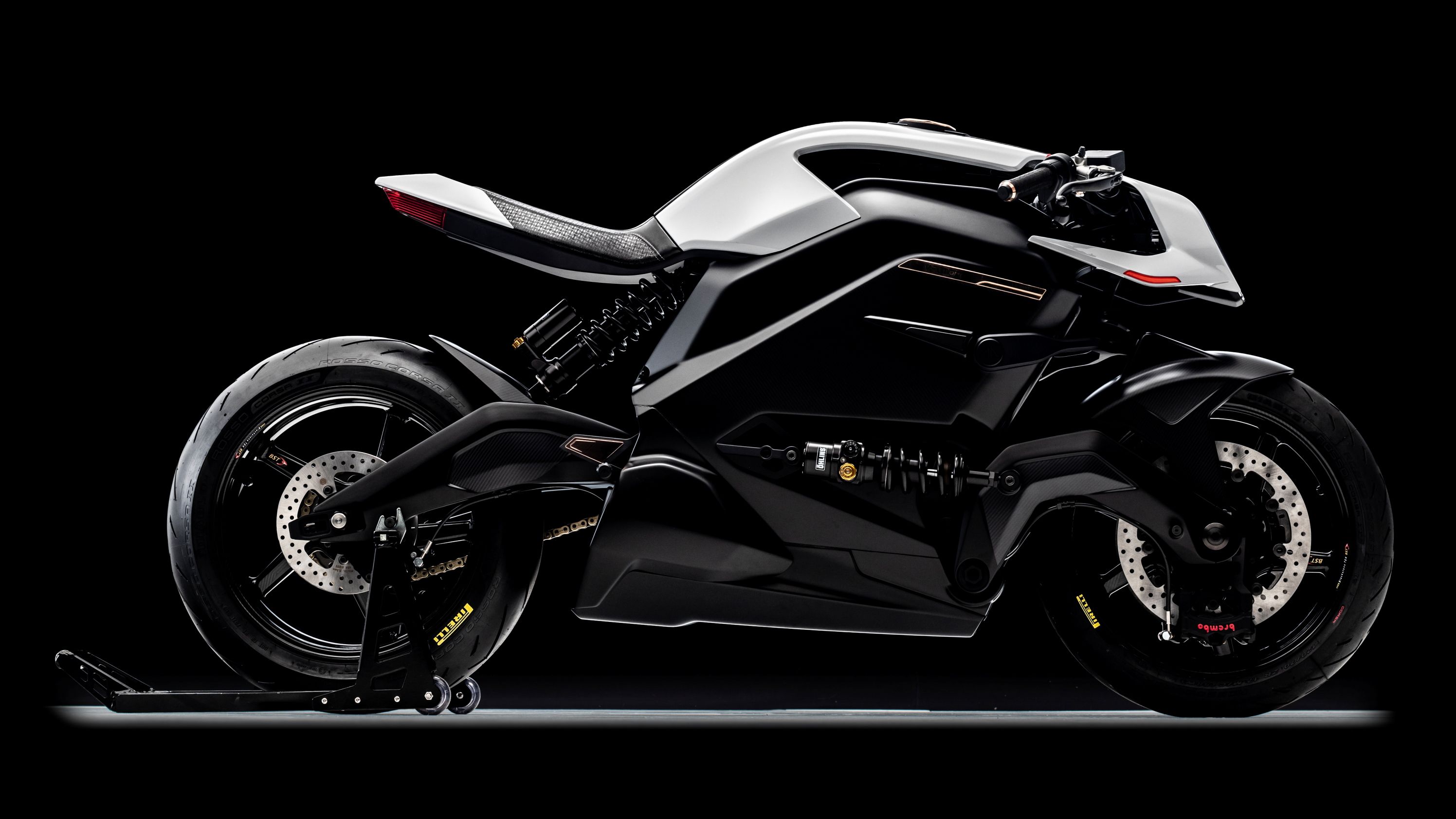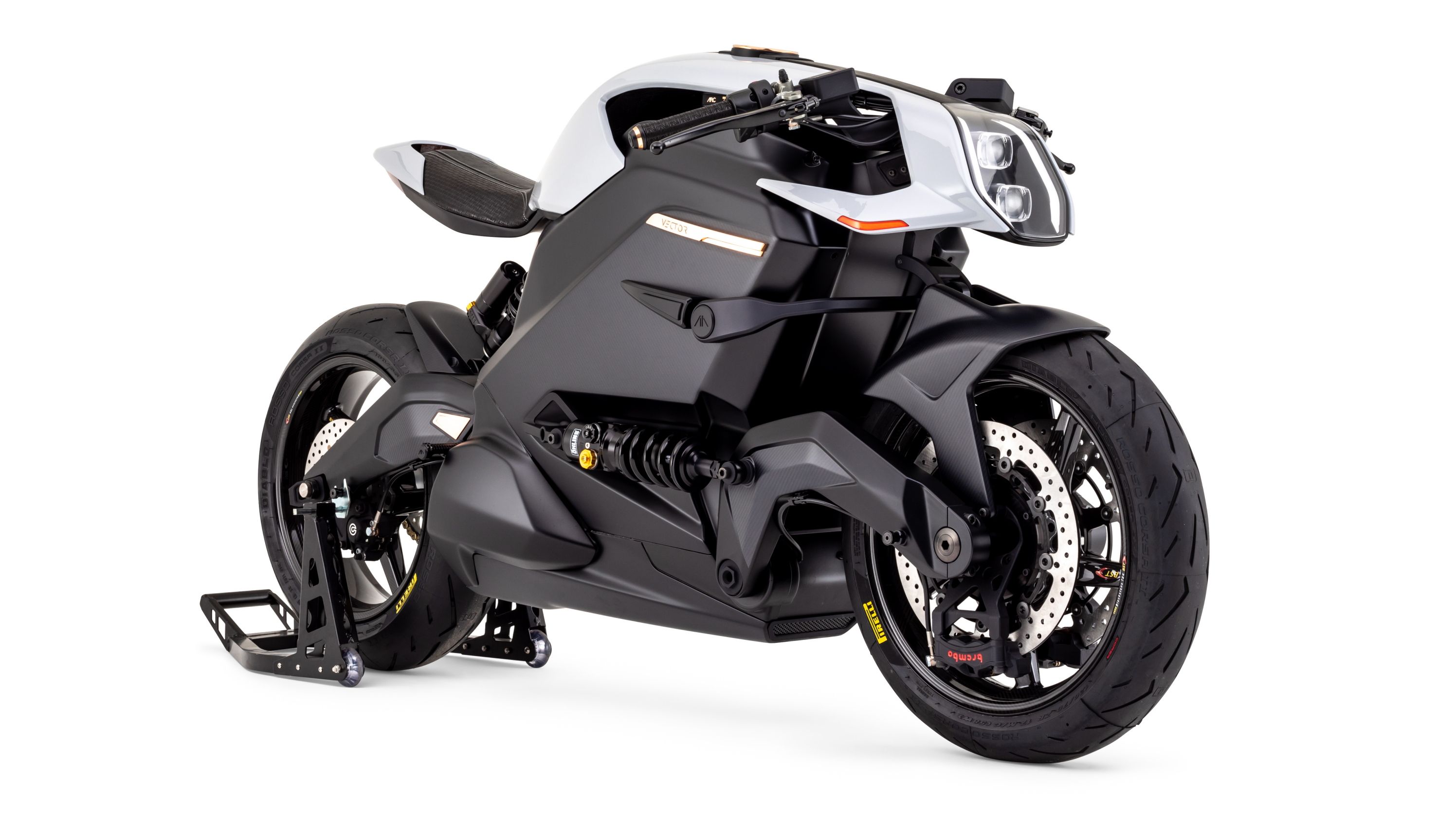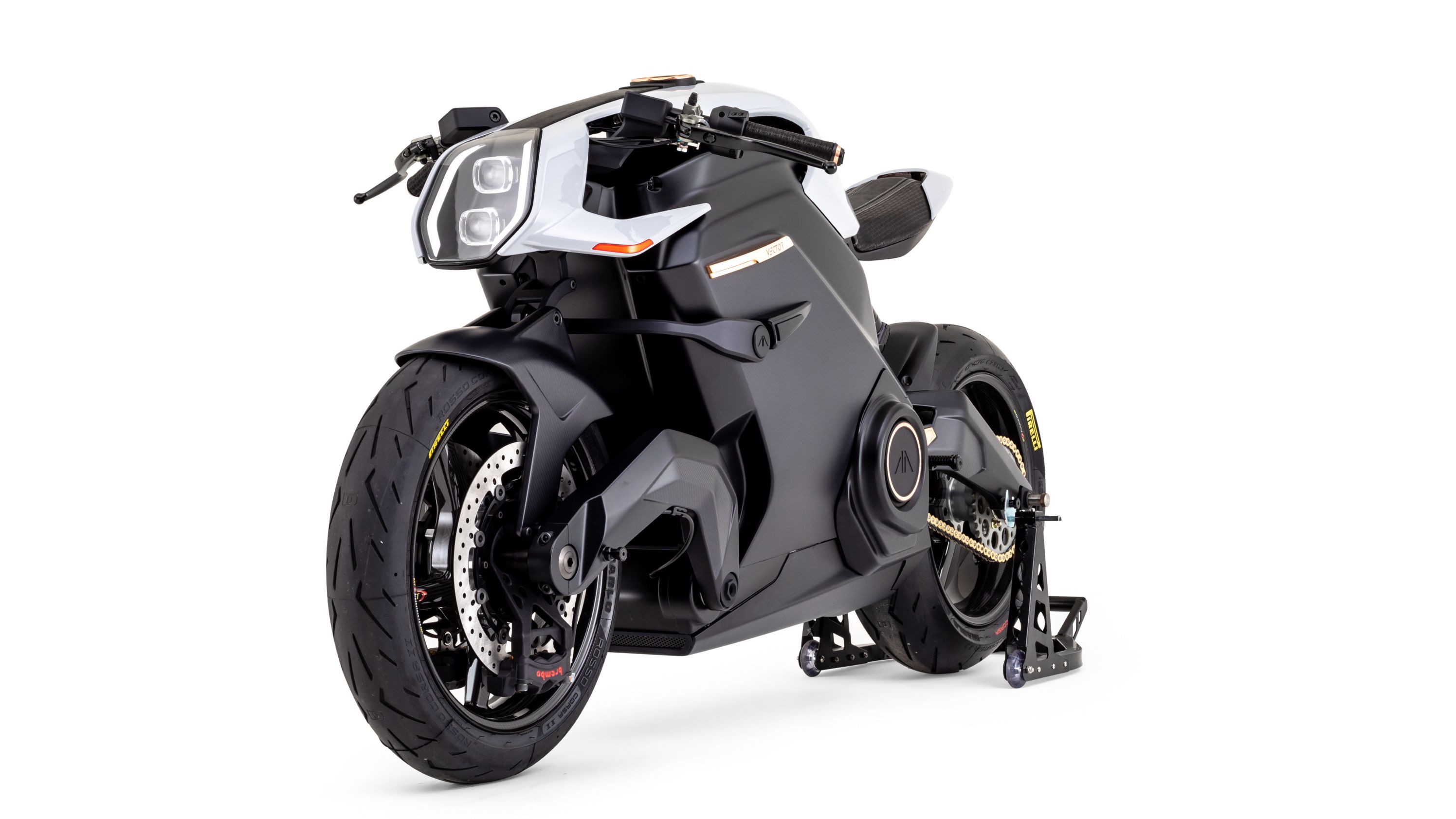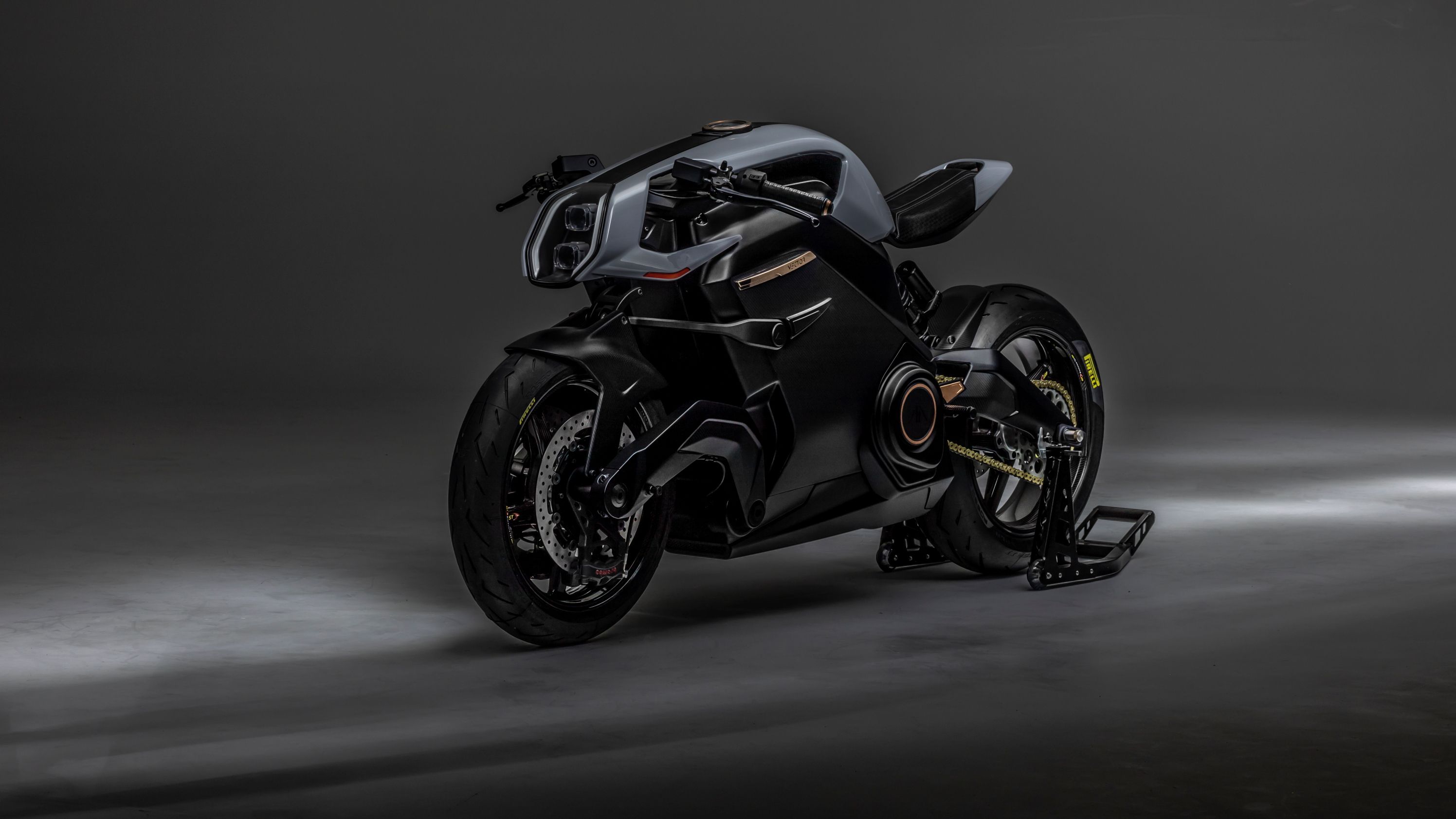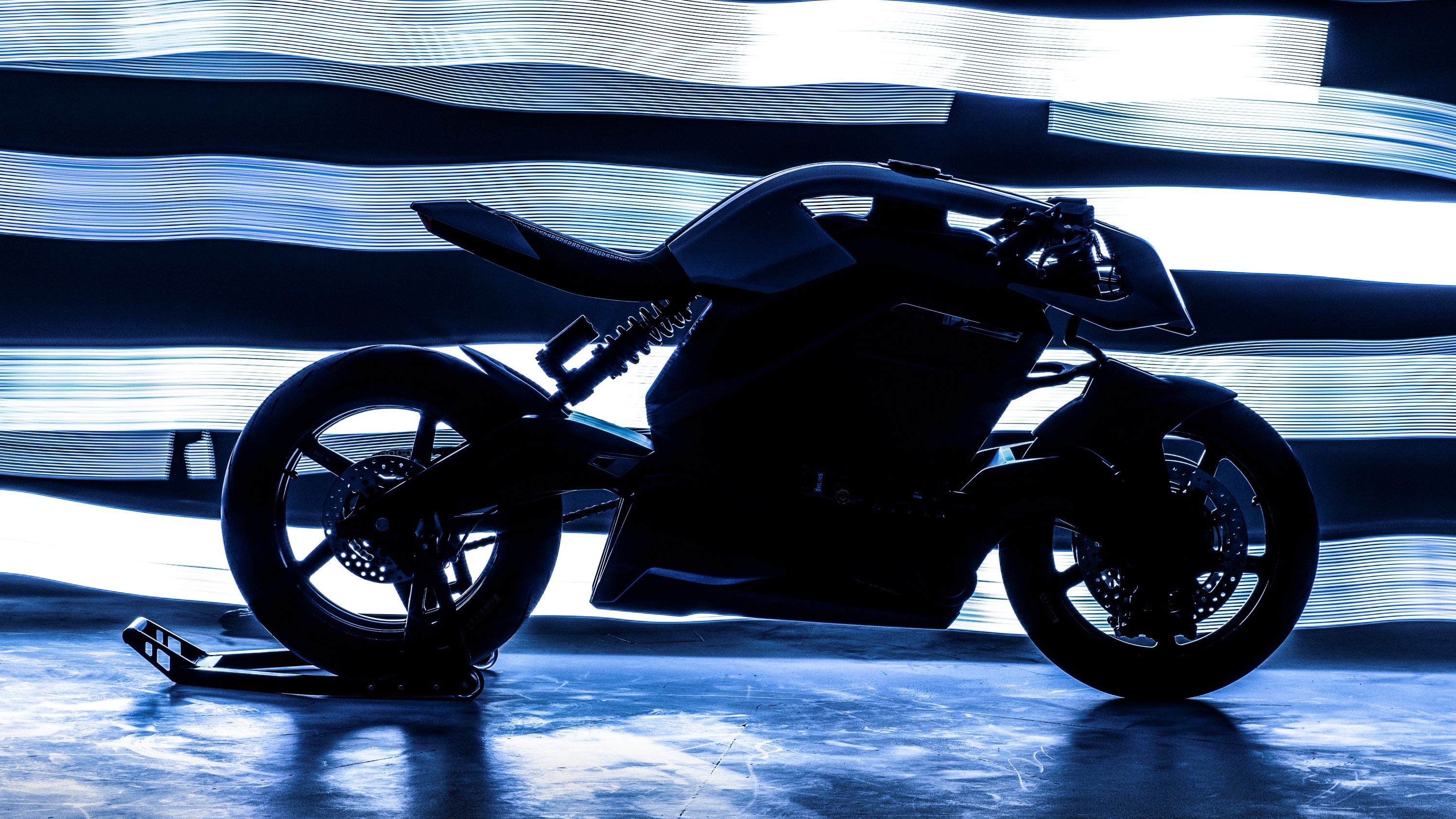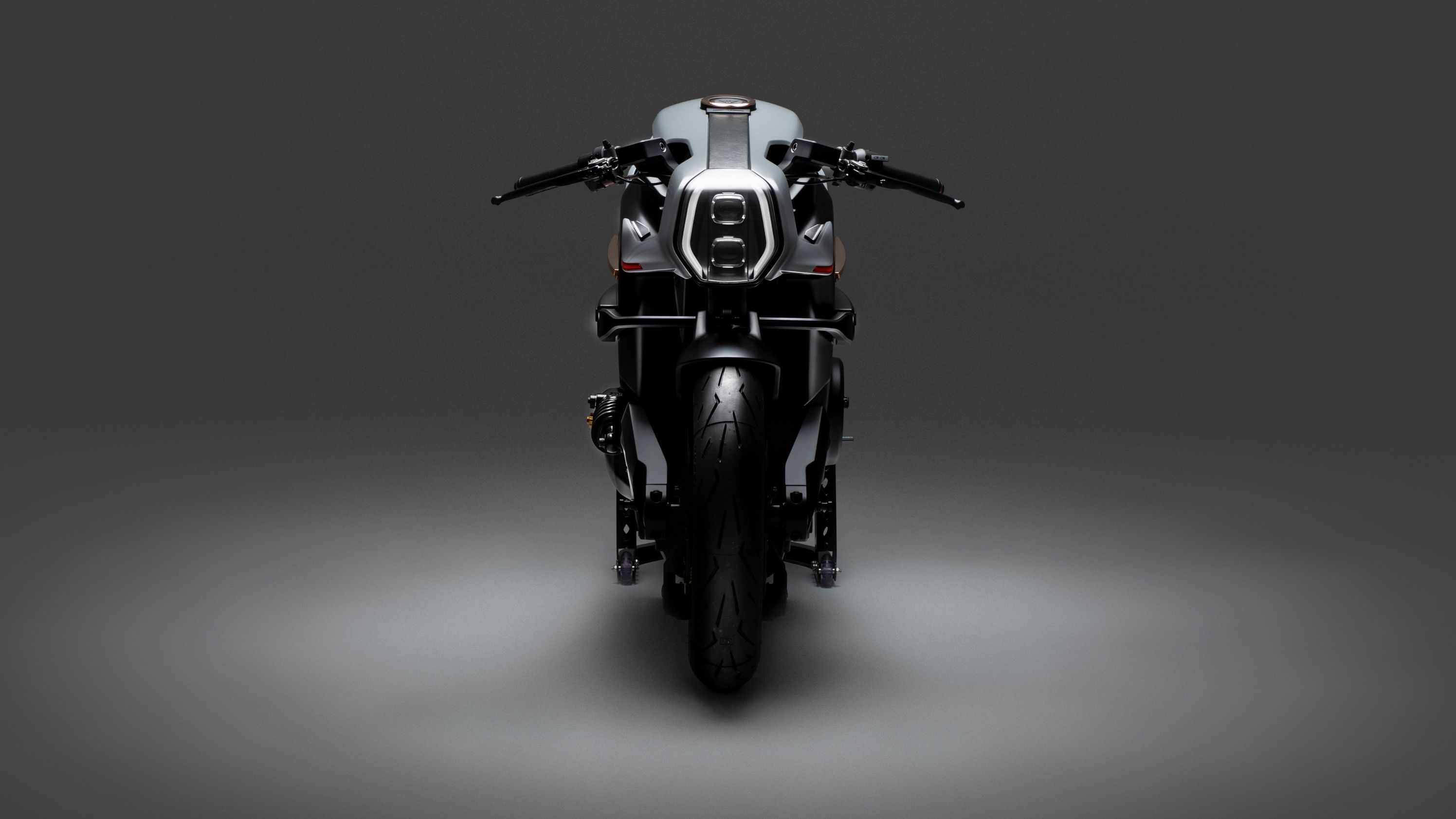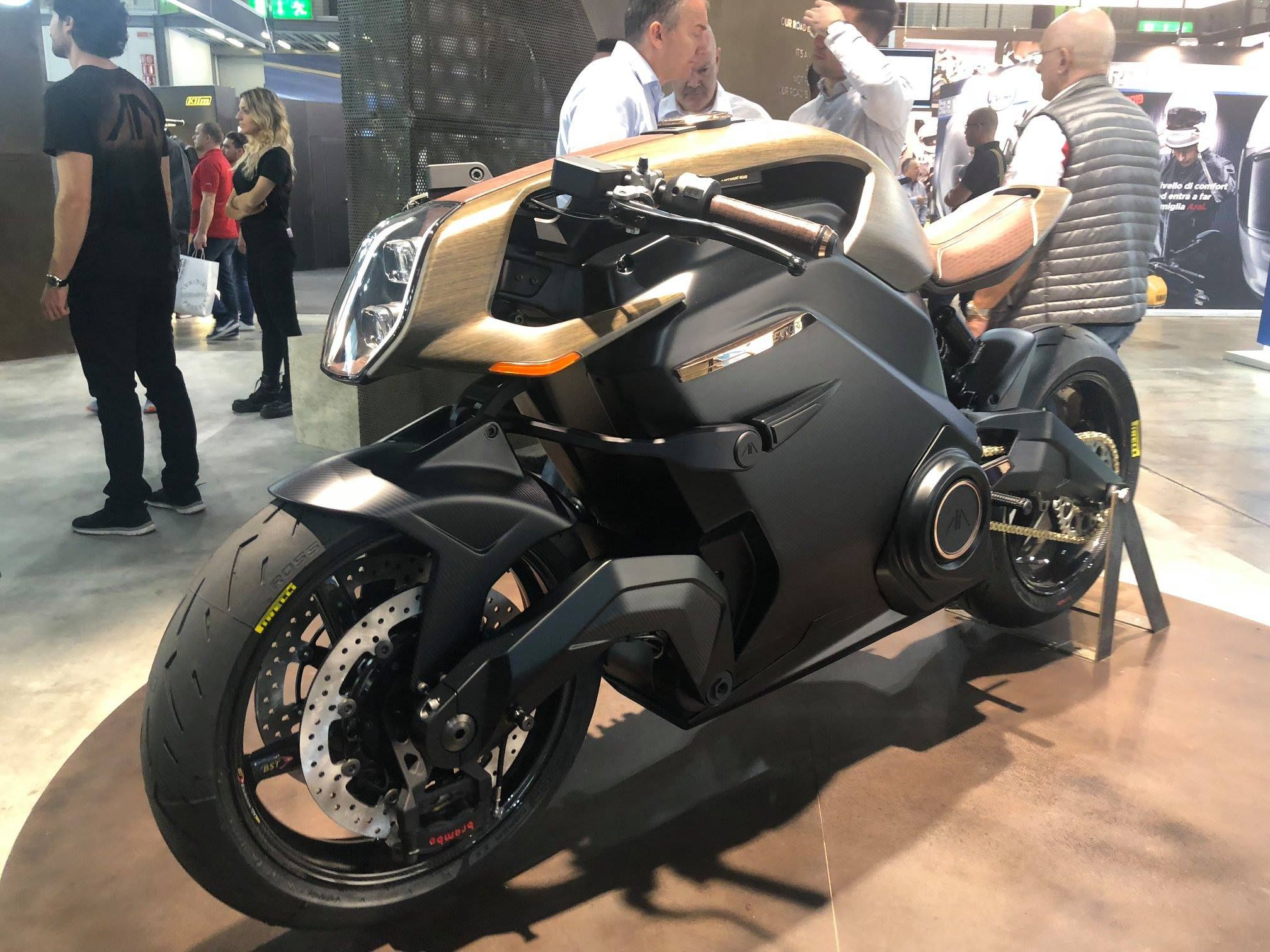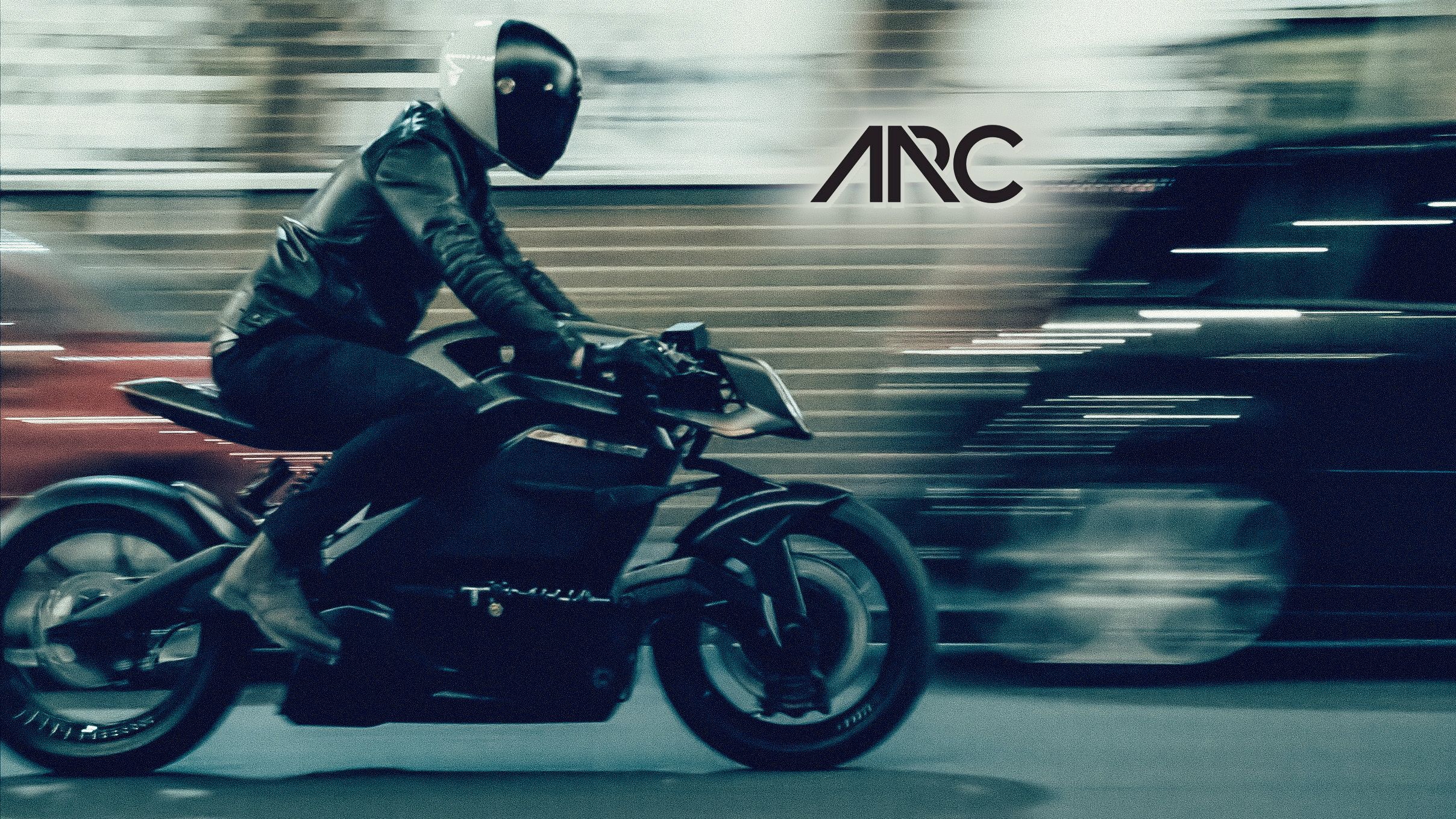Arc falls under the Jaguar-Land Rover umbrella via the “InMotion Ventures” fund, and its first limited-production model, the Vector, hits the streets next year. The Vector is an all-electric ride with some serious performance on tap – I'm talking about a potential range of 270 miles from a single charge and top speeds over the 100-mph mark – and it may be just the push the EV-bike industry needs to be accepted into the mainstream as a viable commuter model.
2020 Arc Vector
- Make: Array
- Model: 2020 Arc Vector
- Engine/Motor: Electric Motor
- [do not use] Vehicle Model: Array
2020 Arc Vector Design
Rather that trying to blend in with the smoker-bike crowd, the Arc Vector owns its progressive nature and unapologetically presents itself as a machine of the future more than the past. Right up front, the Vector veers into unusual territory with the steering hardware and suspension components separated in a bid to increase handling and reduce the amount of force needed to make steering corrections. Bottom line here is: it's a rare look as only BMW and Honda produce anything similar.
Over-under, LED headlights dominate the slender nose and come bracketed by thin DRLs for safety. The flyline sweeps uphill as it incorporates the faux fuel tank before a steep dive to the saddle, much like most modern sportbikes, and in this section alone the Vector cleaves to convention.
In the rear, the upswept subframe maintains a low profile with the taillight recessed at the terminus over an aching void between the tail and the rear wheel. Even the underside is clean with only the swingarm-mount hugger and piggyback shock visible outside the main structure. The ambiguous midsection houses the drivetrain and power storage components from view, though it's obvious at a glance that this is not your typical street/sport bike. Same with the gear; the factory offers an optional HUD helmet that delivers data via an aviation-style heads-up display, and the suit delivers tactile prompts in response to immediate traffic and G-forces, depending on which mode you choose.
2020 Arc Vector Chassis
The body panels aren't just for the looks, or to hide the innards, but are actually stressed members as part of a monocoque support system. It's a stressed-skin structure that derives its strength from the “sheet metal,” actually carbon fiber, and it seems that the single-side swingarm is about the only part of the framework that isn't reinvented, even though it too is made of carbon fiber and resin along with the forward control arms.
Öhlins provides the suspension while Brembo covers the brakes with its Stylema anchors, and ABS protection comes as part of the standard equipment package. The front end defies convention, so the rake and trail numbers are less-than-necessary, and thus, are unpublished. Wheelbase figures are close to the norm at 57-inches between centers, as is the seat height that measures in at 33 inches off the ground. In addition to the traditional brakes, the system uses Adaptive Regeneration that simulates engine-braking while it puts some charge back in the battery.
|
Brakes: |
Brembo Stylema Brake Calipers and Discs with ABS. |
|
Suspension: |
Öhlins TTX suspension front and rear. |
|
Swing arms: |
Carbon fibre, optimized for performance |
2020 Arc Vector Drivetrain
The real magic is in the drivetrain. First off, the metrics: the factory claims a total of 133 horsepower and 109 pound-feet of torque with a top speed governed at 124 mph – figures that are far from unheard of – but the 270-mile range and 40-minute charge time are amazing. I've long said that electrics won't thrive until they are not just viable, but convenient to own and operate, and the Vector looks like the first real bridge across the gulf between smokers and EV bikes.
A 16.8 kWh battery supplies a 399-Volt motor, and it seems like the Vector rolls without any options in the power-storage and charging department, but it really doesn't need any. The performance figures put the Vector at the top of the food chain, even with the top speed governed down – you can only go so fast on public roads anyway.
The only downside I see to using it as a commuter is the utter lack of storage options, so you'd better be comfortable wearin' a backpack. A direct drive precludes the need for a gearbox or its associated clutch and shifter for twist-and-go operation, and it uses a good old-fashioned chain to deliver power to the rear wheel. Traction control and selectable Ride Modes round out the ride-safety electronics.
|
Motor: |
399-volt electric |
|
Performance: |
133 bhp |
|
Torque: |
109 lb-ft (148 Nm) |
|
Charging time: |
40 minutes (Fast charging available through a CCS DC Charger.) |
|
Voltage: |
399V |
|
Battery capacity: |
16.8kWh |
|
0-to-62 mph (0-to-100 km/h): |
3.2 s |
|
Range: |
|
|
└ Urban: |
387 miles (623 km) |
|
└ Ex.Urban: |
230 miles (370 km) |
|
└ Combined: |
270 miles (435 km) |
|
Transmission: |
Clutchless Single Gear Transmission |
2020 Arc Vector Pricing
The first run of the Arc Vector will be limited to 399 units, and production is scheduled to begin in 2020. You can pre-order one for £90,000, and it's unclear if any are slated for international delivery.
|
Electronic Features: |
ABS, Traction Control, Adaptive Regen, Different Selectable Ride and Environment Modes |
|
Price: |
£90,000 |
2020 Arc Vector Competitors
Right now, the pressure is ramping up on the EV sector, but I'm going to stick with the popular and expansive Zero lineup for my head-to-head. Like Arc's first product, Zero's SR/F borrows from conventional design but gives itself away as something out of the ordinary. Zero stayed a bit further on the conventional side of the line with a proper underframe and hydraulic-fork front suspension, but there's no hiding the power storage unit at the heart of it.
Said power unit delivers a 124 mph top speed with 140 pound-feet of torque and 110 horsepower on tap, but the range falls off to 161 miles per charge in the city, and 82 miles on the interstate. That difference is significant when you're trying to decide if an EV bike can meet your practical needs, and since range, performance, and charge times all fall under the convenience category, the Vector shows itself to be the better product – by far, if you'll forgive the pun.
Zero offers a range of storage and charging options, but the fastest charge is 1.5-hours long, which is more than twice that of the Vector to hand Arc another victory. Zero scores in the price and availability column, though. The base model 2020 SR/F rolls for $18,995 and the Premium package fetches $20,995, which is a far cry from the approximate $114,000 Arc Vector.
He Said
“Yikes! The price tag on this ride is liable to scare off many a buyer, and the limited run adds to the exclusivity, but I guess you have to start somewhere and this is the first effort. I look forward to seeing what this marque comes out with next, and if they can get the price under control, I expect it to be on the cutting edge of this burgeoning market.”
She Said
My wife and fellow motorcycle writer, Allyn Hinton, says, “We first had a peek at the Arc Vector at 2018 EICMA. It was intriguing to say the least. It was slated then as a 2019, but it looks like we'll see it in the summer of 2020. It started as a wacky idea in 2015 over at the Jaguar/LandRover think tank according to Arc CEO Mark Truman. Because of the unconventional front suspension, the Vector has an incredibly steep steering angle so handling should be simply amazing. Super fast recharge times and more than ample range makes this the new electric bike to watch, in my opinion.”
2020 Arc Vector Specifications
|
Motor & Performance: |
|
|
Motor: |
399-volt electric |
|
Performance: |
133 bhp |
|
Torque: |
109 lb-ft (148 Nm) |
|
Charging time: |
40 minutes (Fast charging available through a CCS DC Charger.) |
|
Voltage: |
399V |
|
Battery capacity: |
16.8kWh |
|
0-to-62 mph (0-to-100 km/h): |
3.2 s |
|
Range: |
|
|
└ Urban: |
387 miles (623 km) |
|
└ Ex.Urban: |
230 miles (370 km) |
|
└ Combined: |
270 miles (435 km) |
|
Transmission: |
Clutchless Single Gear Transmission |
|
Chassis: |
|
|
Brakes: |
Brembo Stylema Brake Calipers and Discs with ABS. |
|
Suspension: |
Öhlins TTX suspension front and rear. |
|
Swing arms: |
Carbon fibre, optimized for performance |
|
Dimensions & Capacities: |
|
|
Curb Weight: |
220 kg |
|
Top Speed: |
124 mph (200 km/h) governed |
|
Wheelbase: |
57 inches (1,450 mm) |
|
Seat Height: |
33.1 inches (840 mm) |
|
Details: |
|
|
Electronic Features: |
ABS, Traction Control, Adaptive Regen, Different Selectable Ride and Environment Modes |
|
Price: |
£90,000 |
Further Reading
Zero SR/F
See our review of the Zero SR/F.
Arc
Read more Arc news.

